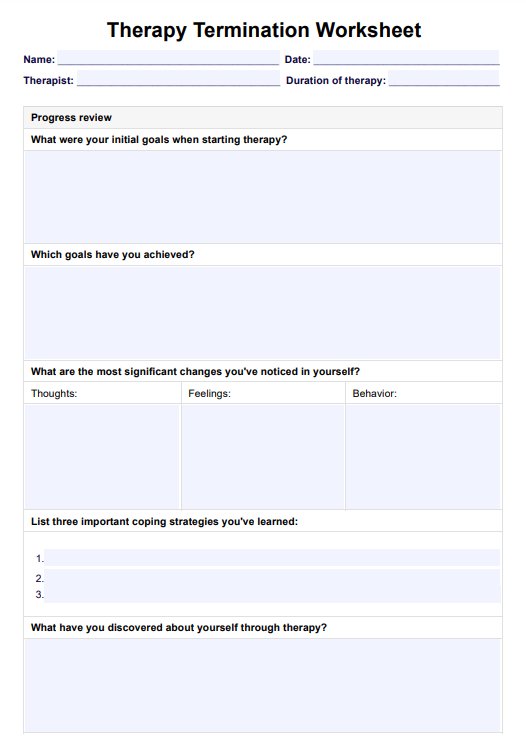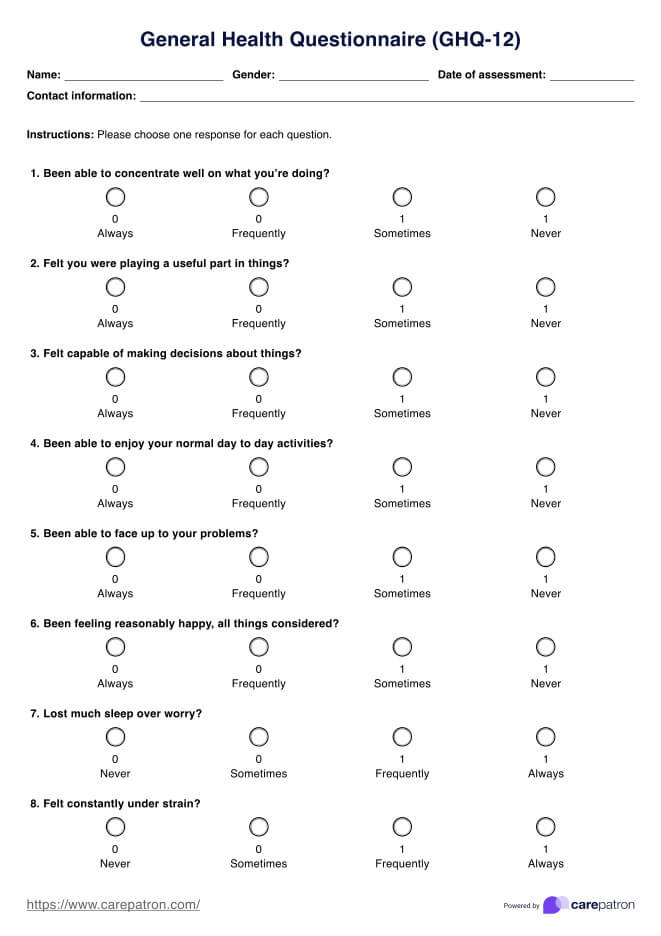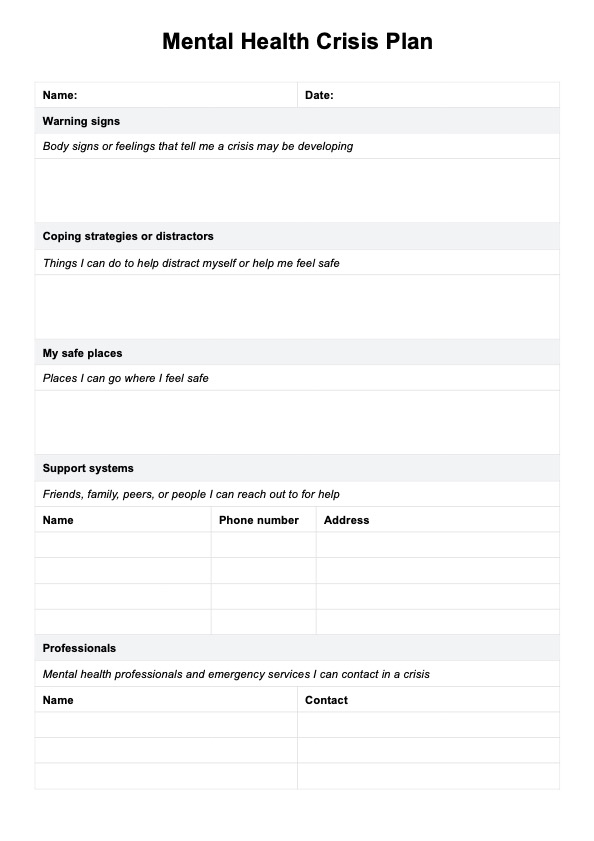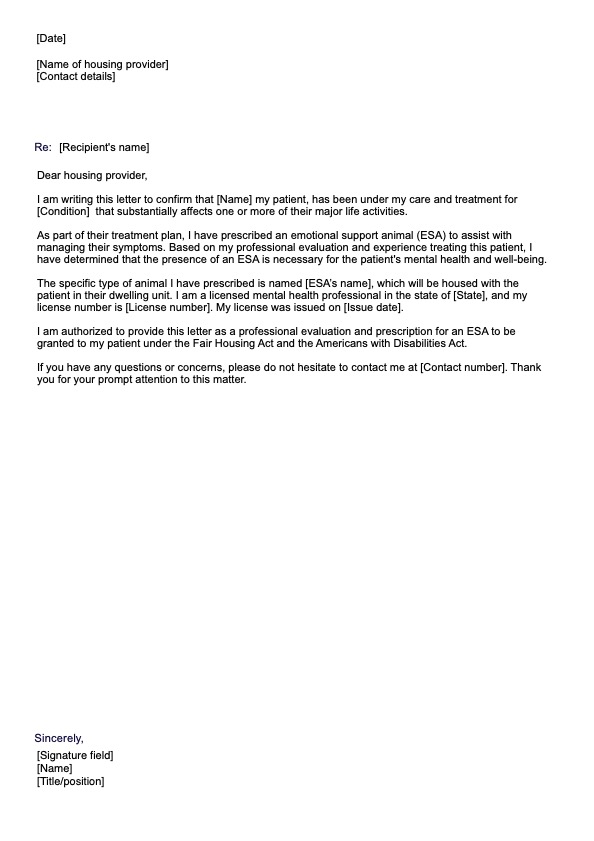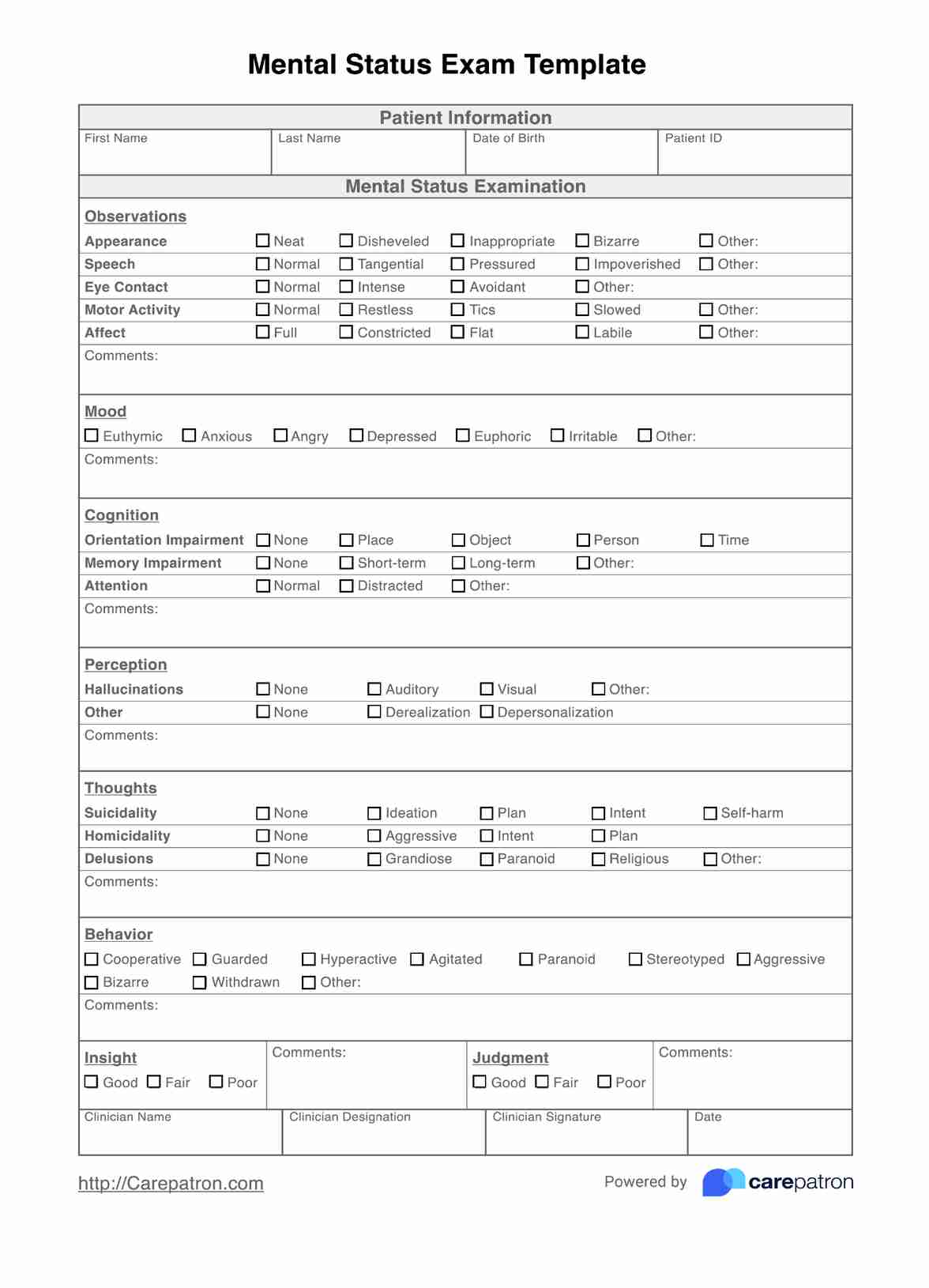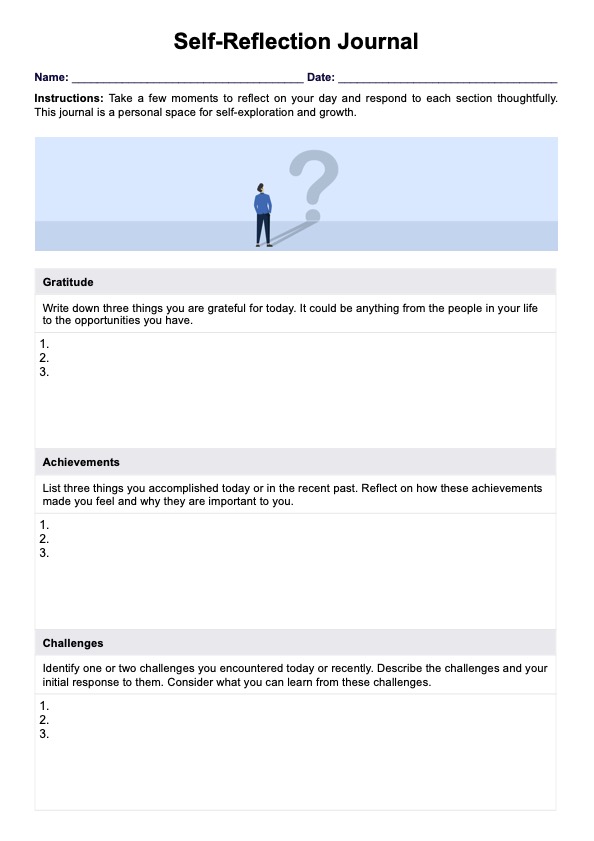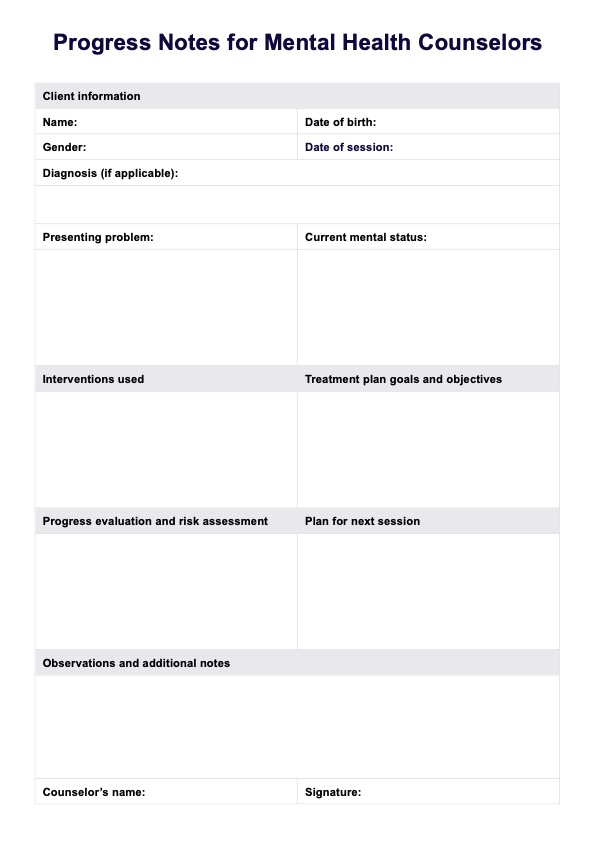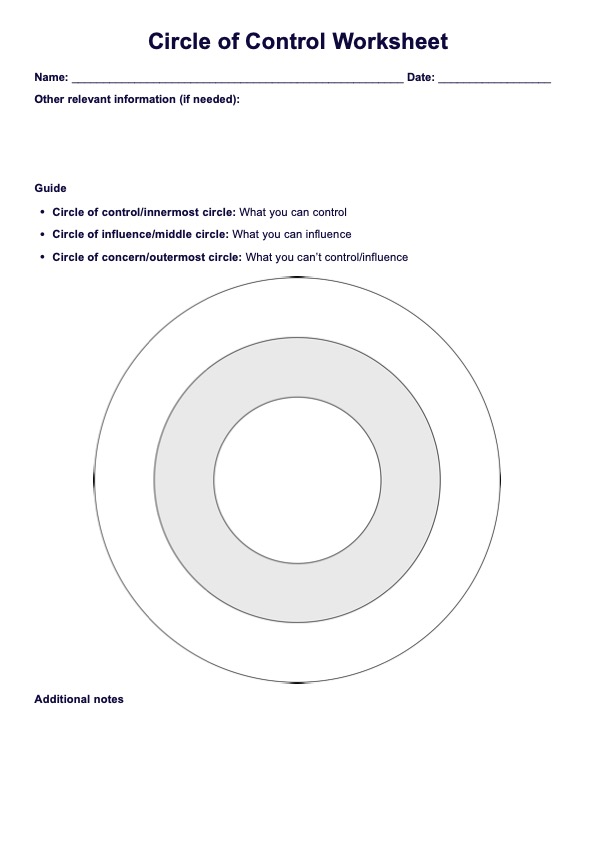Thought Record Template
Gain a more comprehensive understanding of how clients process their thoughts by using our thought record template. This tool provides a structured approach to exploring thoughts and feelings, helping you chart potential triggers in an easy-to-understand format.


What is a Thought Record Template?
A Thought Record Template is a tool therapists use to help their clients identify and challenge negative automatic thoughts. By writing down their thoughts, clients can recognize patterns in their thinking that may impact their well-being.
The template has several sections that prompt clients to identify their emotions and feelings about an incident or situation. These templates can also document clients’ automatic thoughts and record possible alternative explanations of events. Clients can replace negative memories with more neutral and realistic interpretations. Additionally, they can help list positive coping strategies that can be implemented to reduce negative emotions.
Information collected through a Thought Record Template can help you better understand how your client processes events and experiences, which can be extremely valuable in assisting them in modifying behaviors or creating healthier thought patterns.
Another format for cognitive behavioral therapy (CBT) thought records is the 7-column thought record, which is used when clients face distressing situations, mild or severe, and need to address mental health issues. This format helps clients become aware of negative thought patterns, understand their impact, and break the habit by considering beneficial thoughts for their mental and physical well-being. The 7-column thought record includes seven sections: situation/trigger, feelings/body sensations, unhelpful thoughts/images, facts supporting unhelpful thoughts, facts opposing unhelpful thoughts, alternative thoughts, and outcome.
Thought Record Template
Thought Record Template Example
How to use this Thought Record Template
We've designed this template so your clients can complete it independently, making it simpler to incorporate into your practice. Here are a few steps to get started:
Step 1: Download the template
Download a copy of the template, which you can do for free using the link on this page. You can also download it within your Carepatron app.
Step 2: Provide a copy to your client
Give your client a copy of the Thought Record Template for completion. The template lets your client complete it independently, but you can also read the steps below to ensure they fully understand what is expected for each part of the template.
Step 3: Client completes the template
This Thought Record Template guides clients through several steps to analyze their experiences. Clients begin by identifying a triggering situation, documenting their automatic thoughts and emotions, and providing evidence for and against those thoughts. During the process, it is also worth acknowledging more realistic or neutral thoughts. Finally, they list positive coping strategies and review their entries to understand how their thoughts and feelings influenced their reactions.
Step 4: Discuss their responses
Once your client has completed the template and is happy to share what they've written with you, the template can be a fantastic way to start a discussion and gain insight into your client's thoughts and motivations behind their behaviors.
Step 5: Store the template securely
Should your client want to return the template to you, store it securely, as it contains confidential information.
Who can use these printable Thought Record Template (PDF)?
A Thought Record Template is an effective tool for mental health professionals and individuals seeking insight into their thought patterns. Due to its general format, many clients and practitioners will find this template useful. Some of the practitioners who can use this template include:
- Therapists
- Counselors
- Psychologists
- Psychiatrists
- Mental health nurses
- Family doctors
- Child and adolescent psychologists
Why is this form useful for cognitive behavior therapy therapists?
There are various ways in which using CBT thought records can improve their practices, especially in cognitive behavior therapy. The thought recording process is a practical way to make one's negative automatic thoughts visible. These include:
- Better understanding of the client's thought process: Utilizing a Thought Record Template can provide an objective understanding of your client's cognitive processing abilities and thought patterns, informing treatment goals and interventions.
- Providing an informed approach to decisions: Using this allows you to create tailored approaches better suited for your client's unique needs, thus leading to more effective outcomes over time.
- Opportunity to observe how clients deal with their emotions: CBT thought records also allow therapists to observe how they deal with emotions to inform therapeutic strategies such as cognitive restructuring, reframing, or emotion regulation techniques that could help them manage their symptoms when they feel bad in a difficult situation.
This is not a one-time process and clients should know this. Regularly recording their thought process can help until positive thinking becomes second nature to them.
Benefits of Thought Record Template
During cognitive therapy, this can be used as part of the intake process with clients to understand better how a person processes unhelpful thoughts and identify cognitive distortions during events and experiences. Some of the benefits of this template are:
Help evaluate thoughts coming from your client
This Thought Record Template allows you to thoroughly assess the content and quality of your client's thoughts, providing information about how they interpret events or experiences. It will then enable you to design and create healthier coping strategies while highlighting negative thinking patterns that must be addressed.
Help clients increase their self-awareness about negative thinking
Utilizing a template can help your client improve their self-awareness by providing an opportunity for self-reflection and expression. By documenting their thoughts and feelings associated with an incident or situation, your clients can gain insight into why they responded in specific ways. This helps them identify unhelpful thinking patterns and replace them with healthier alternatives.
Allow clients to be more involved in treatment
Assigning “homework” can give your clients a self-guided journey through their therapeutic progress. By encouraging them to work as partners in their own treatment, you can maximize the effectiveness of each session and refine their abilities to manage emotions.
Fully digital
With this, you no longer have to worry about printing a copy for your client —it can quickly be sent and filled out digitally. Going digital also helps speed up the process and provides an extra layer of security for your data.
Commonly asked questions
A Thought Record Template is a handy tool therapists use to help clients recognize and challenge negative emotions and thinking patterns that may affect their overall well-being.
Thought Record Template can be used in various contexts to help individuals better understand how their thoughts and emotions shape their responses to different situations. This template is used for mental health interventions such as treating anxiety or depression, but it can also be beneficial for personal growth and development.
Mental health professionals such as therapists, psychiatrists, and psychologists typically use this type of template as part of their clinical practice for assessment purposes.


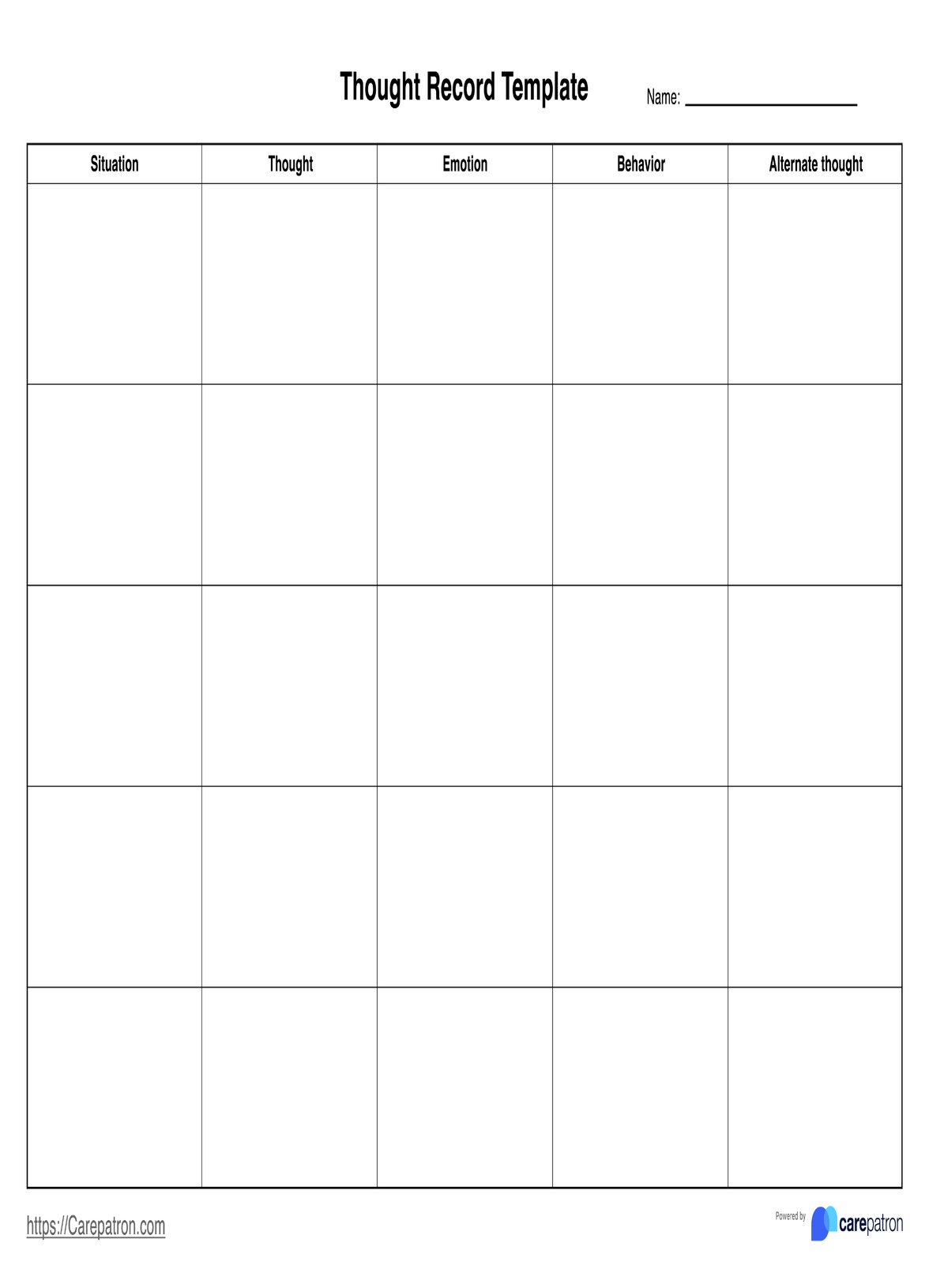
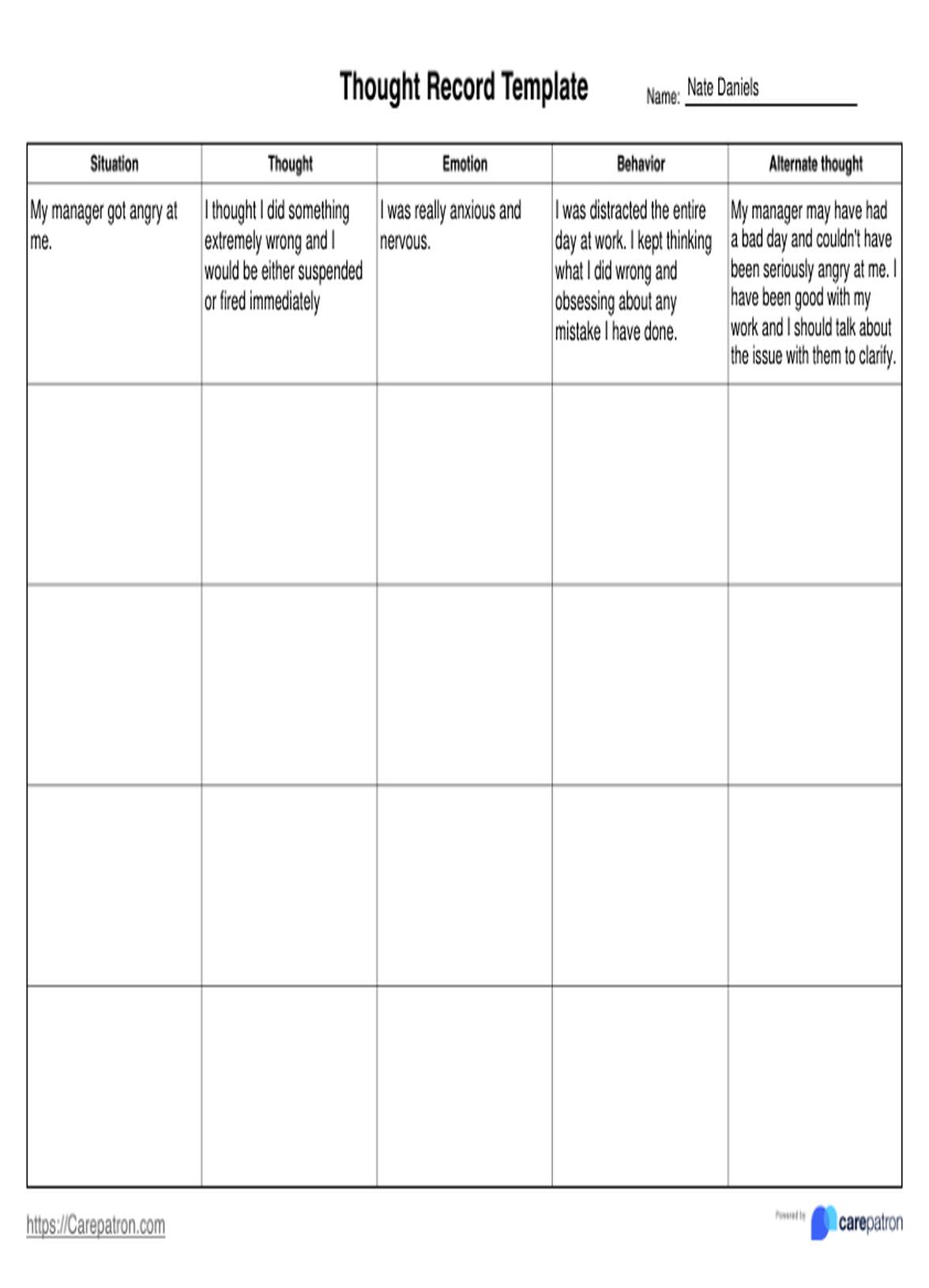

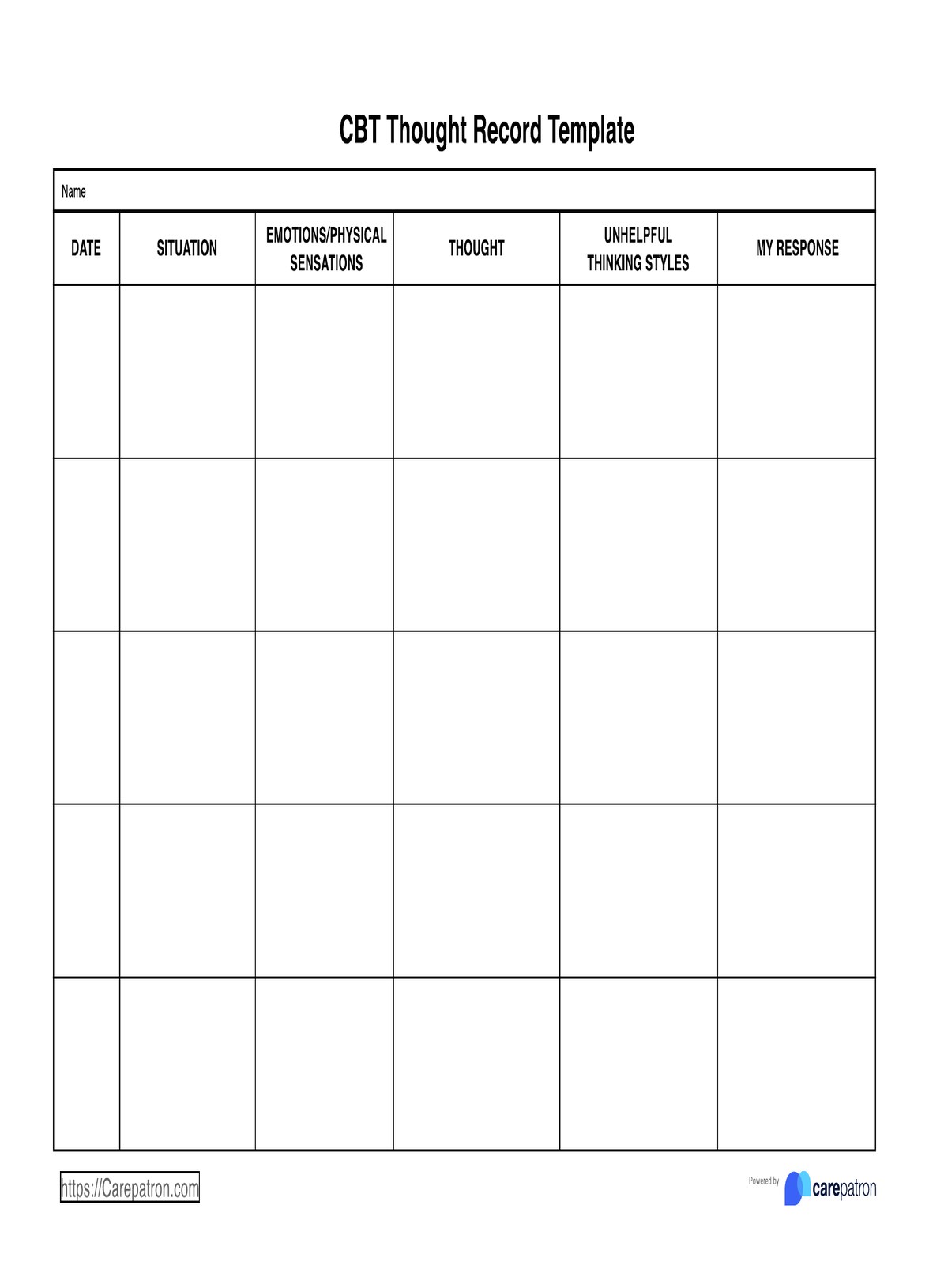
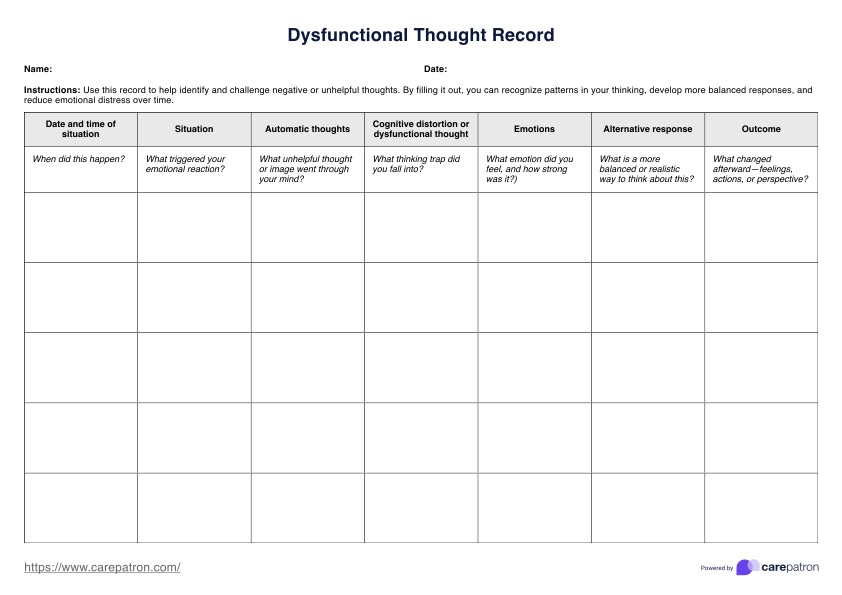














-template.jpg)





















































































